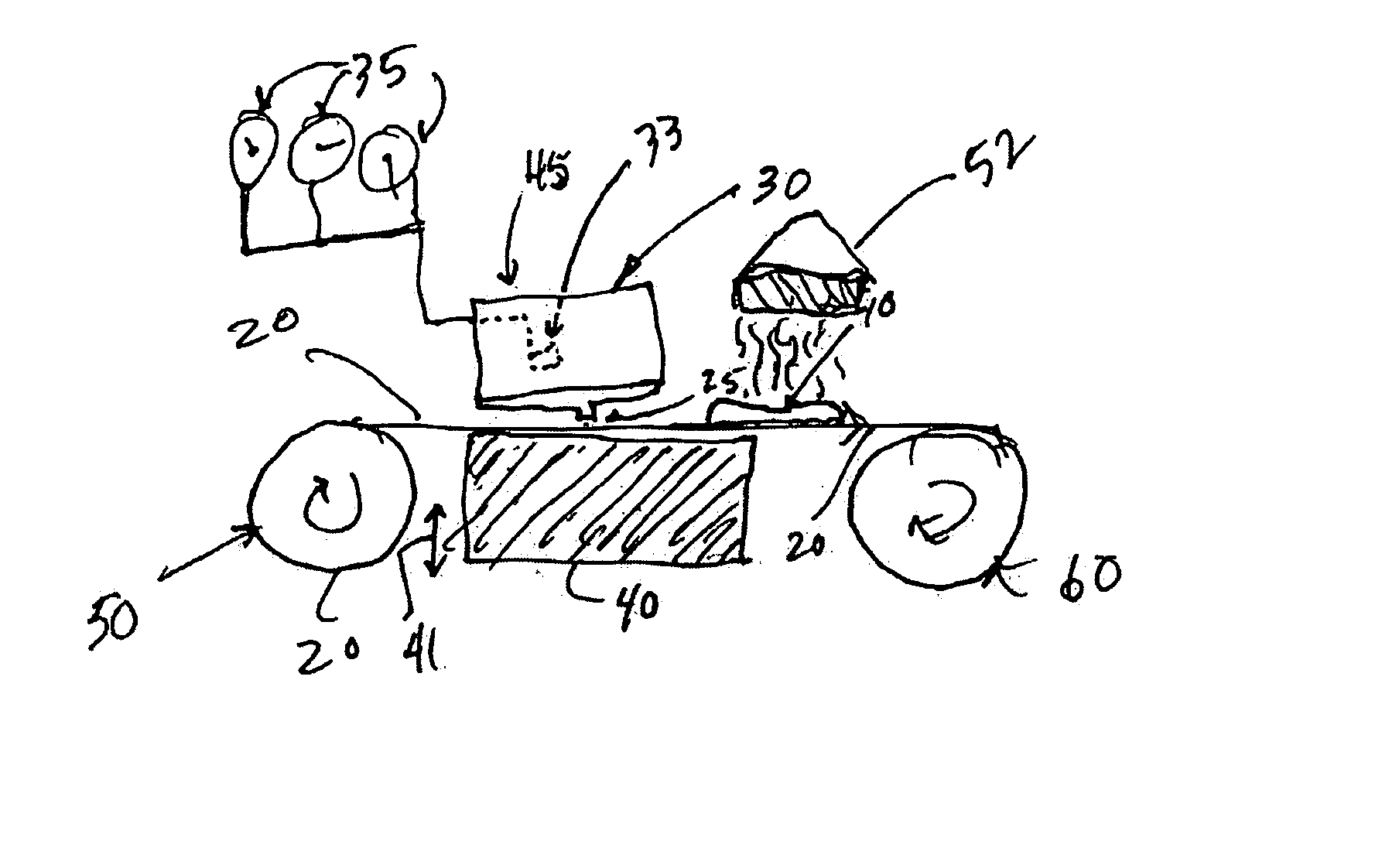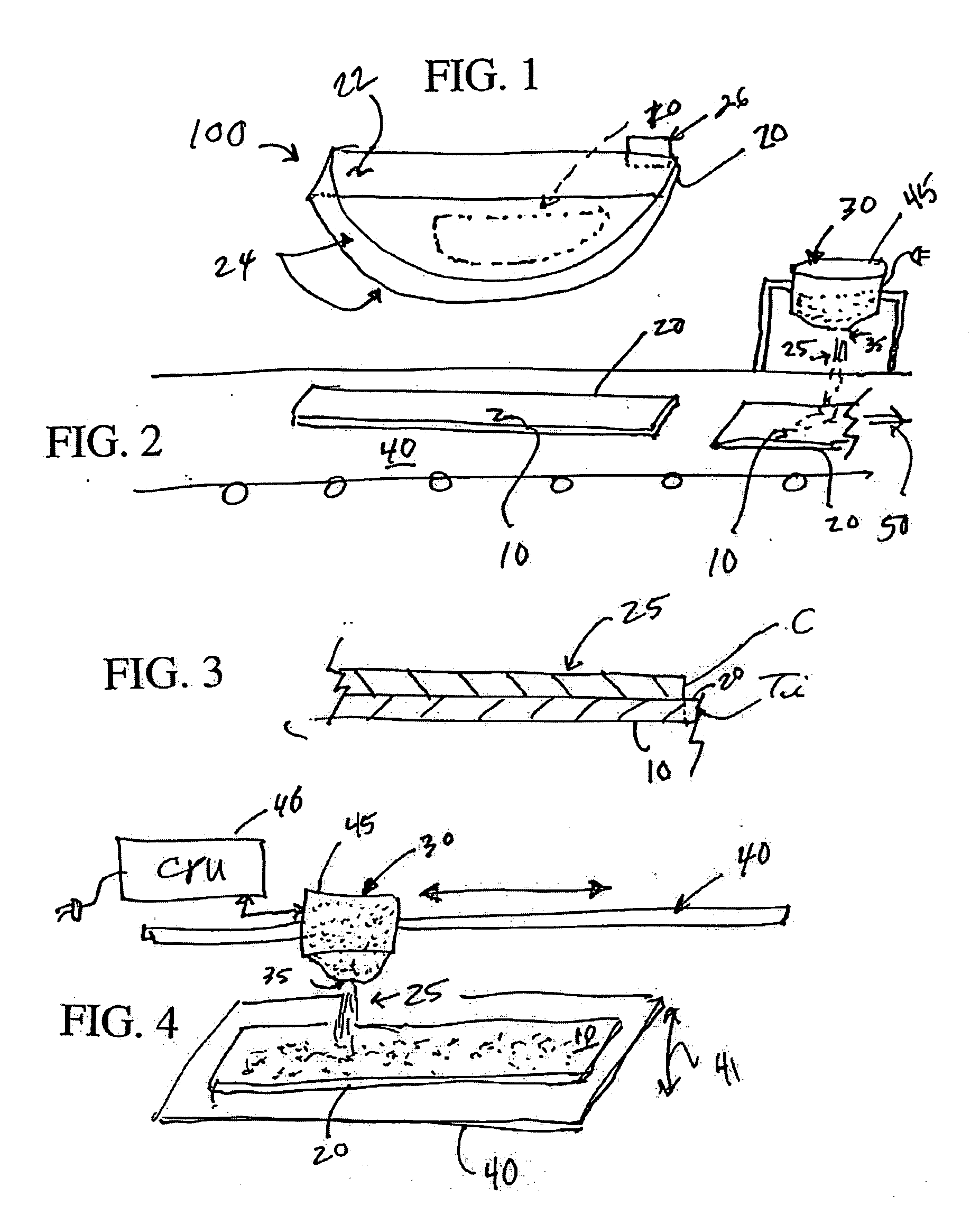Methods and apparatus for producing carbon cathodes
a carbon cathode and carbon fiber technology, applied in the manufacture of capacitors, cell components, electrode manufacturing processes, etc., can solve the problems of large bulky and expensive battery(s) and high-voltage capacitor(s) used to provide and accumulate the energy required for effective cardioversion/defibrillation therapy, and achieve the effect of reducing equivalent series resistance (esr), robust high-capacitance cathodes, and vastly enhanced manufacturability
- Summary
- Abstract
- Description
- Claims
- Application Information
AI Technical Summary
Benefits of technology
Problems solved by technology
Method used
Image
Examples
Embodiment Construction
[0033] The present invention provides improved cathodes and methods for producing such cathodes for ultimate use in conjunction with valve metal capacitors. The family of cathodes according to the present invention can be produced so that they inhabit a pre-existing metallic surface such as an inner surface of a titanium casing adjacent to but insulated from direct electrical communication from an anode member. Foil-type valve metal anodes (such as aluminum) may be used in conjunction with the cathodes of the present invention; however, porous valve metal anodes (formed from metallic tantalum powder) are assumed for the purposes of the following description of the invention.
[0034] One embodiment of the present invention involves depositing a layer of carbon onto an inner surface of a titanium capacitor casing. The inner surface comprises titanium and may include a portion of the casing itself or one or more discrete titanium members disposed within said casing. Other embodiments of...
PUM
| Property | Measurement | Unit |
|---|---|---|
| depth | aaaaa | aaaaa |
| temperatures | aaaaa | aaaaa |
| depth | aaaaa | aaaaa |
Abstract
Description
Claims
Application Information
 Login to View More
Login to View More - R&D
- Intellectual Property
- Life Sciences
- Materials
- Tech Scout
- Unparalleled Data Quality
- Higher Quality Content
- 60% Fewer Hallucinations
Browse by: Latest US Patents, China's latest patents, Technical Efficacy Thesaurus, Application Domain, Technology Topic, Popular Technical Reports.
© 2025 PatSnap. All rights reserved.Legal|Privacy policy|Modern Slavery Act Transparency Statement|Sitemap|About US| Contact US: help@patsnap.com



